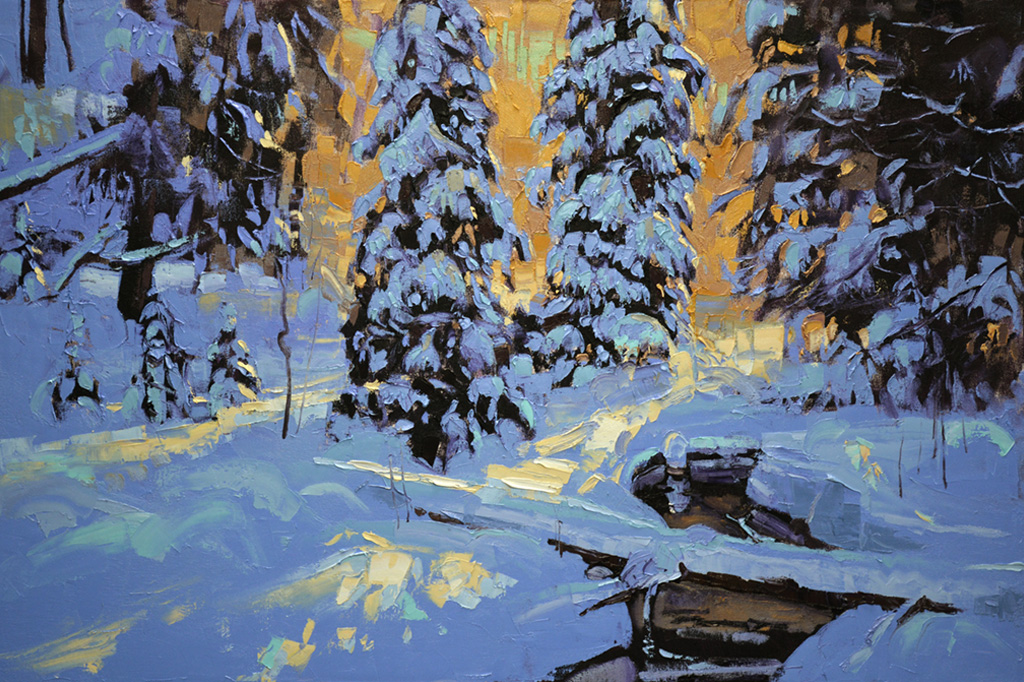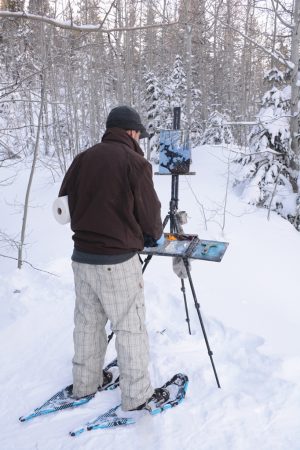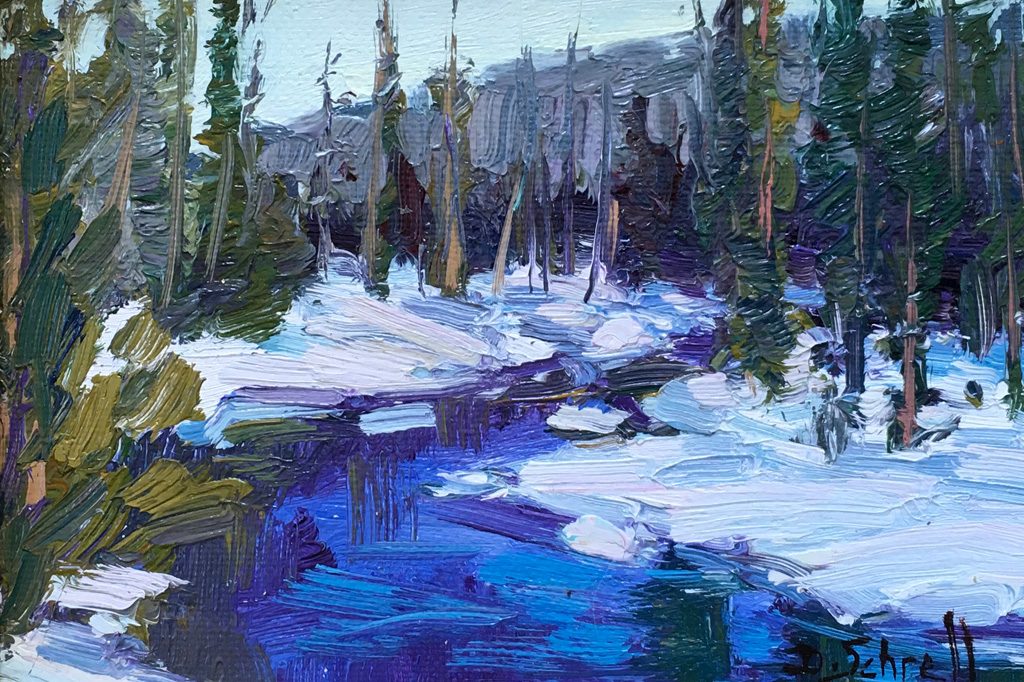When the snow starts piling up in Sun Valley, winter enthusiasts throughout the region don their warm clothes and pull out their favorite snowy pastime tools: skis, snowboards, goggles, and maybe snowshoes, too. But another kind of winter lover packs up a different set of tools: paint and paintbrushes, easel and canvas.
The Wood River Valley draws artists year-round for its beautiful scenery, which inspires many of them to paint “en plein air”: outdoors, exposed to the elements, engaging with their subject in real time. The time-honored tradition has been around as long as people have made art, though it was 19th-century masters like Monet and Renoir who brought the term plein air into vogue, advocating the value of working in natural light in outdoor environments.
Winter scenes in particular provide artists with an array of artistic opportunities, though only the most dedicated plein air artists haul their gear through the frigid temps and snow fields to capture those perfect scenes.
Ketchum artist Deanna Schrell, a member of the statewide group Plein Air Painters of Idaho, or PAPI, has painted plein air in the Valley for years. Her work has been featured in numerous local art shows as well as the Wood River Valley Studio Tour. Though she loves winter scenes, she said they pose a number of challenges.
“If you’re not painting from your car and you want to paint, let’s say, by a river, you need snowshoes, a backpack for your gear and warm clothes, and you need to make sure your paints aren’t frozen,” she said.
Schrell said she mostly uses oil paint—
on either board or canvas—which is helpful, considering they remain usable even at very low temperatures.
She also said that painting outdoors offers more interesting artistic opportunities than painting in the studio from memory or a photo.
“One of the main reasons for painting on site is to capture the correct colors,” Schrell said. “When painting outside, you hope to capture the whole mood and effect of the scene by experiencing it firsthand.”
Twin Falls artist Silas Thompson—whose work is represented at Kneeland Gallery in Ketchum as well as galleries in Jackson, Wyo., and Park City, Utah—echoes Schrell’s sentiments. He prefers painting plein air rather than from a photograph because he said the naked eye is able to spot nuances and variations that a camera simplifies out
of existence.
“The eyes are exceedingly more capable of seeing than the camera is,” Thompson said.
Using oils and a mixture of brush, palette knife and other tools, Thompson particularly enjoys rendering winter scenes because of the way the sun, hanging low in the sky, casts long, intricate shadows that give the scenes depth.
Also, venturing into a winter wilderness is exciting on its own.
“Aside from the technical benefits of painting outdoors, there is a certain degree of adventure, risk, and purity that makes my heartbeat quicken at the grandness of it all, neck hairs raise in the gathering storm and hands numb from the elements,” Thompson said.
But the things that make painting winter scenes outside so rewarding also present challenges. Apart from selecting the right materials and hoping they don’t blow away in the wind or get ruined by precipitation, the rapidly changing light means artists don’t have much time to capture the scene.
“I have an assortment of easels that I use in the field depending on the weather, the time, and the size of what I’ll be painting,” Schrell said. “If you’re painting clouds or sunsets or sheep, you only have so much time to paint them before they disappear or change.”
Despite the challenges, Schrell said she loves venturing outdoors to capture specific moods of a scene, in winter and other seasons.
“I enjoy going back to the same scene and seeing how I can paint it differently with the different moods and times of day,” she said.
Thompson has similar sentiments, and he especially loves painting winter scenes for what he sees as the season’s philosophical implications.
“I think it is more personal,” he said. “It’s the death and the hope of new life. Almost religious, winter is like a beautiful pure shadow of something better that is to come—that, plus the cold numbness that reminds you you are truly alive.”
However, Thompson admits that sometimes, on frigid winter days, the temptation to remain inside and stay warm next to a fire alongside his wife and daughter can be too much to bear.
“It is not for the faint of heart, standing in a foot of snow in January at about 18 degrees,” he said.




